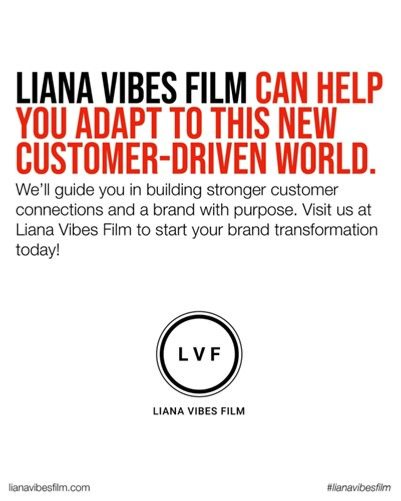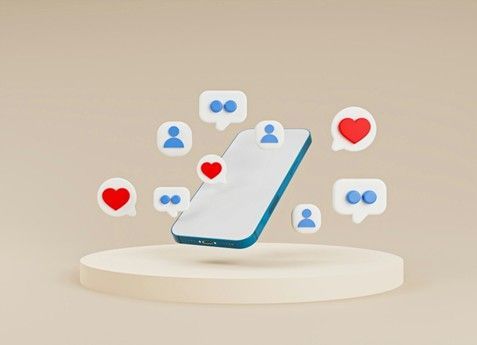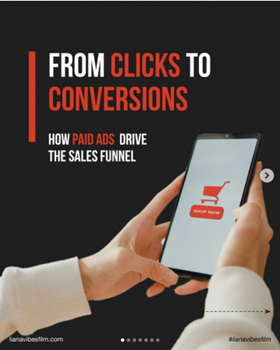More Than a Logo: Designing a Brand Identity System That Breathes
The Logo Is Just the Beginning
In a world saturated with logos, it’s easy to confuse a brand with its most visible mark. But true brand distinction doesn’t come from a single icon; it comes from a system. A brand identity system that breathes is cohesive, adaptive, and emotionally intelligent. It’s how brands communicate who they are, why they matter, and how they make people feel.
Beyond colors and shapes, this system weaves together every touchpoint-from typography and tone of voice to user experience and storytelling-creating a unified presence that resonates deeply with audiences. In this blog, we’ll explore how building a dynamic brand identity system not only sets you apart in a crowded marketplace but also fosters lasting emotional connections that turn customers into loyal advocates.

Why a Logo Isn’t Enough
Simon Sinek urges us to “Start with Why.” This philosophy isn’t limited to mission statements, it applies to design. A logo shows what your brand is. A full identity system reveals why your brand exists and how it should feel across every touchpoint.
A logo might grab attention, but it’s your system that earns trust and builds memory.
What Is a Brand Identity System?
A brand identity system is a visual and verbal framework that governs how your brand looks, feels, and communicates. It includes:
- Logo variations and usage rules
- Brand color palette and emotional psychology
- Typography and hierarchy
- Iconography and image styles
- Design layouts and templates
- Voice and tone guidelines
- Accessibility rules
When designed with intention, these elements work as one, creating a living, breathing identity that evolves with your business.
Blair Enns: Clarity Over Cleverness
Blair Enns emphasizes that clarity is more powerful than cleverness. A well-designed identity system removes confusion and expresses your positioning at a glance.
It helps your team create consistent content. It makes your audience recognize you, and more importantly, remember you. And when clarity is paired with authenticity, the result is trust.
The Strategic Layers of a Living Identity
A breathing brand identity system is not static. It adapts while remaining aligned. Key qualities include:
- Purpose-Driven – Rooted in your mission and audience insight.
- Emotionally Consistent – Designed to evoke the same feeling across channels.
- Modular – Scales across formats: web, print, social, product.
- Accessible – Readable, usable, and inclusive to all.
- Documented – Captured in guidelines that empower execution.
Leila Hormozi: Branding From the Inside Out
Leila Hormozi reminds us: “Marketing only works when it reflects what’s true inside the business.” That’s why an identity system must start with alignment, not aesthetics.
Your visuals should reflect your internal culture, values, and voice. That’s how you build congruence, and congruence breeds credibility.
Case Study Highlights
- Spotify: Uses a bold and minimalist design system that adapts to diverse genres and global cultures while remaining unmistakably
“Spotify.”
- Mailchimp: Balances quirky illustration with structured layouts, blending playfulness with professionalism.
- Liana Vibes Film: Crafts brand identity systems rooted in emotional storytelling and founder values — turning businesses into cinematic, human-first brands.
System vs. Style: The Real Difference
A brand identity system is not just a style guide. It’s a strategic toolkit that turns vision into reality. It unites your team, accelerates creative production, and ensures every output reflects your brand essence.
As Simon Sinek puts it, “People don’t buy what you do. They buy why you do it.” Your brand system is the infrastructure that communicates that “why.”
How to Build a Brand Identity System That Breathes
- Start with Strategy
Define your “why,” brand archetype, and customer persona. These will guide visual direction. - Build Flexibility Into Structure
Allow space for growth while anchoring every element in brand values. - Create Emotionally Coherent Design Rules
Fonts, colors, and icons should all express the same emotional intent. - Document Thoroughly
A system is only as good as its guidelines. Capture do’s, don’ts, tone examples, and usage cases. - Review and Evolve Annually
As your brand grows, so should your system. Keep it relevant, purposeful, and aligned.
FAQs
1. What’s the difference between a logo and a brand identity system?
A logo is one symbol. A brand identity system includes the entire visual and verbal toolkit that ensures your brand looks and feels consistent everywhere.
2. Is a full brand identity system necessary for small businesses?
Absolutely. Clear systems help small businesses scale efficiently, create faster content, and build a memorable presence.
3. How often should I update my identity system?
You should review annually, especially if your mission evolves or your audience changes. Design that breathes is design that adapts.










